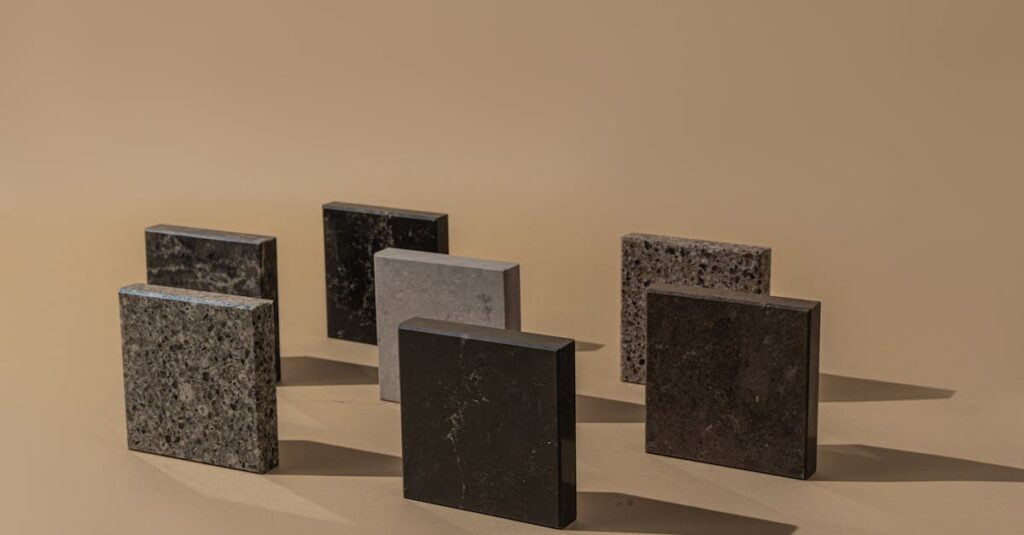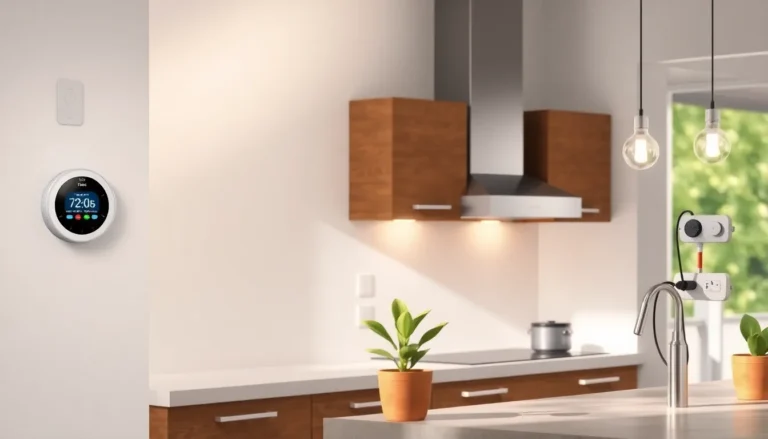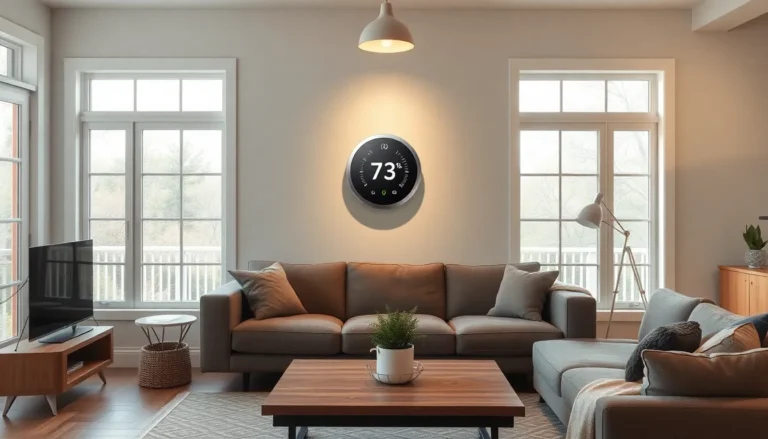Table of Contents
ToggleImagine walking into a space that feels like it was designed just for you. Architectural design concepts aren’t just blueprints and materials; they’re the magic that transforms a simple structure into a living, breathing work of art. From the sleek lines of modern minimalism to the charming quirks of rustic designs, these concepts shape the way people experience their environments every day.
In a world where cookie-cutter homes dominate, understanding architectural design can be your secret weapon for creating spaces that inspire and delight. Whether you’re a seasoned architect or a curious homeowner, diving into these concepts will open up a treasure trove of creativity. So grab your hard hat and let’s explore the fascinating world of architectural design, where every corner tells a story and every room has a personality.
Overview of Architectural Design Concepts
Architectural design encompasses various principles that shape the built environment. It blends aesthetics, functionality, and context to create meaningful structures. Spatial organization plays a crucial role; well-designed spaces encourage interaction and enhance usability.
Form and function must coexist seamlessly. A building’s shape can reflect its purpose, where innovative designs often challenge traditional norms. Sustainability is another vital consideration, with eco-friendly materials and energy-efficient solutions designed to minimize environmental impact.
Cultural influences enrich architectural concepts. Regional styles and historical context contribute significantly to a structure’s identity. This connection to culture inspires unique designs that resonate with the community, creating a sense of belonging.
The integration of technology further elevates design potential. Smart building technologies and advanced materials influence how spaces adapt to occupants’ needs. These innovations help architects push boundaries, resulting in dynamic environments.
Consideration of human experience is paramount. Design must cater to the inhabitants’ emotional and psychological needs, promoting well-being. Natural light, ventilation, and accessibility often enhance the livability of a space.
Architectural design concepts draw from diverse influences to create distinct environments. Each aspect, from sustainability to technology, contributes to the complex fabric of modern architecture. All these elements work together to narrate the story of a space, making it both functional and inspiring.
Key Influences on Architectural Design
Architectural design draws inspiration from various influences that shape its evolution and application.
Cultural Factors
Cultural factors significantly shape architectural identity. Regional styles illustrate diversity through design, capturing local traditions and practices. Historical narratives often dictate building aesthetics, influencing form and material choices. Structures often reflect community values, fostering a sense of belonging and continuity. Icons of architecture arise from cultural significance, where each landmark tells a unique story. Celebrations of artistic expressions within community events also impact design approaches, infusing spaces with local character. Integration of traditional craftsmanship enhances a structure’s authenticity while ensuring it resonates with its surroundings.
Technological Advances
Technological advances revolutionize architectural practices. Smart building technologies create adaptive environments that respond to occupants’ needs efficiently. Innovations in materials empower architects to explore new forms and structures, ensuring durability and sustainability. Energy-efficient systems reduce environmental impact, paving the way for greener designs. Virtual reality and computational modeling allow for precise visualizations, facilitating collaborative design processes. Automation enhances functionality, enabling controlled environments that optimize comfort. Sustainability increasingly informs technological choices, integrating renewable energy solutions to minimize carbon footprints and promote resilience in architecture.
Types of Architectural Design Concepts
Architectural design concepts encompass various approaches that shape the built environment. This section highlights prominent types that influence both aesthetics and functionality.
Minimalism
Minimalism emphasizes simplicity and functionality in design. It focuses on clean lines, open spaces, and a limited color palette to create a serene atmosphere. Less is more in minimalist architecture, where each element serves a purpose. Natural light plays a vital role, enhancing the mood within these spaces. Furniture and decor maintain an unobtrusive style, allowing the architecture to shine. This approach fosters tranquility, making it ideal for modern living.
Sustainable Design
Sustainable design prioritizes environmental responsibility and resource efficiency. Architects incorporate eco-friendly materials and techniques to minimize ecological footprints. Renewable energy sources, like solar panels, often feature prominently in these projects. Green roofs and efficient insulation improve energy conservation. This design concept recognizes the need for harmony between built environments and nature. Ultimately, sustainable architecture aims to create spaces that nurture both occupants and the planet.
Adaptive Reuse
Adaptive reuse transforms old structures into functional modern spaces. This approach recycles existing buildings, preserving their historical significance while meeting contemporary needs. Renovation techniques maintain key architectural features, enhancing a community’s character. Repurposed warehouses and factories often become vibrant mixed-use developments, promoting local culture. By minimizing new construction, adaptive reuse contributes to sustainability and reduces waste. This concept balances preservation with innovation, redefining urban landscapes.
The Role of Functionality in Design
Functionality stands at the core of architectural design. Spaces need to serve specific purposes while catering to occupants’ needs. An effective design balances aesthetics with practicality, ensuring that every element works together seamlessly.
Spatial organization promotes interaction and usability, allowing movement and accessibility to guide the experience within a structure. Design principles encourage thoughtful layouts that enhance the flow between different areas. Consideration of lighting and ventilation plays a crucial role in functionality, contributing to the overall comfort and well-being of the occupants.
Sustainability also exemplifies functionality in design. Architects increasingly incorporate eco-friendly materials and energy-efficient systems to reduce environmental impact. This approach does not sacrifice style; instead, it enhances the character of a space while ensuring it serves future generations.
Adaptable spaces define modern functionality. As occupants’ needs change, designs must evolve accordingly. Flexibility in use can maximize the value of a building, allowing for different activities to occur within the same area. Smart technologies, such as automated climate control and lighting systems, optimize energy usage while enhancing user comfort.
Cultural context shapes functionality as well. Regional styles reflect local traditions and needs, creating a unique identity for each structure. By integrating cultural influences, architects create spaces that resonate with the community, fostering a sense of belonging.
Overall, understanding functionality allows architects and designers to create innovative, meaningful environments. Each element works together to improve the user experience while honoring the environment and cultural context. Functionality transforms architecture from mere structures into impactful spaces that inspire and enhance everyday life.
Architectural design concepts play a pivotal role in shaping environments that resonate with both functionality and beauty. By embracing creativity and understanding the interplay of cultural influences and technological advancements, architects can craft spaces that not only serve practical needs but also inspire and uplift.
The emphasis on sustainability and adaptability ensures that designs remain relevant in a rapidly changing world, fostering a deeper connection between occupants and their surroundings. Each architectural choice contributes to a narrative that reflects community values and individual experiences, ultimately transforming structures into meaningful places.
As the field continues to evolve, the possibilities for innovative design remain limitless, inviting exploration and experimentation in every project.







